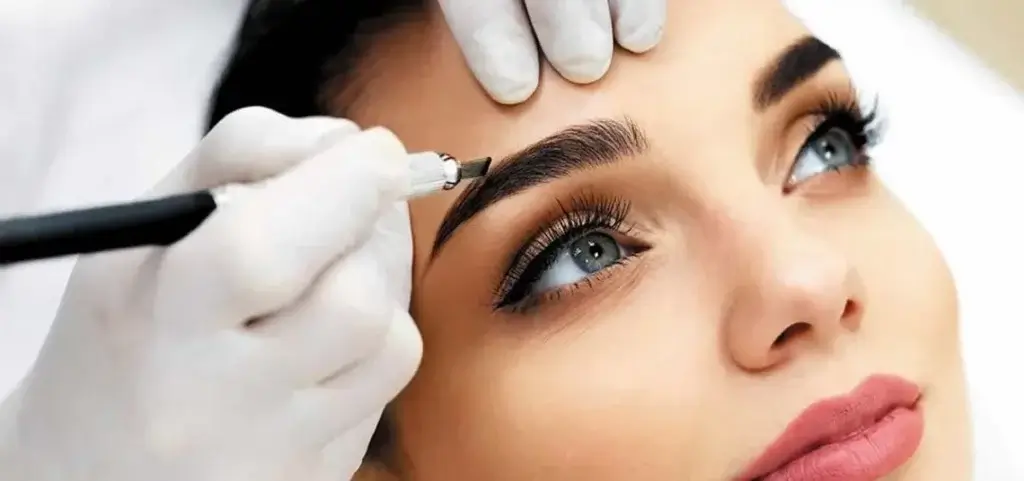Microblading removal techniques typically use a laser solution to break down the pigment and lighten the tattooed area.
Some of the most common ways to remove or fade microblading techniques include:
Laser removal:
In this process, pigment particles in the skin are broken down with a special laser and absorbed by the body’s natural processes.
Saline removal:
A saline solution can be injected into the skin to break down the pigment and lighten the tattoo over time.
Removal of glycolic acid:
A glycolic acid solution can be used to exfoliate the skin and fade the pigment.
Microblading Removal Cream:
These are topical creams that claim to fade Microblading over time, but their effectiveness is often questioned.
It is important to note that Microblading removal techniques are painful and can cause scarring and other side effects. Always consult a professional esthetician or dermatologist before trying any kind of Microblading removal technique. They can recommend the best course of action based on your individual needs and goals.
You May Like : What Does Microneedling do Exactly?
How to fade old Microblading at home

Attempting to fade old Microblading at home is not recommended as it can be a delicate and difficult process that should be done by a trained professional. Further damage and scars may remain. However, if you want to reduce the appearance of Microblading, you can try the following options.
- Use a gentle exfoliator: Exfoliating the skin can help remove dead skin cells and lighten the pigment. However, be careful not to use anything that is too sharp and may damage the skin.
- Apply whitening cream: Skin lightening creams help fade pigment over time. Look for products that contain ingredients. However, test all products first to make sure you do not have an allergic reaction.
- Avoid sun exposure: Sun exposure can darken the pigment, so protect your brows from the sun by wearing a hat or using sunscreen with SPF 30 or higher.
- Wait until the pigment disappears on its own. Microblading usually lasts 1-3 years and the pigment fades over time. If you wait patiently, the Microblading may fade on its own over time.
If you try these methods and are still unsatisfied with the appearance of your Microblading, we recommend that you consult a professional cosmetologist or dermatologist to recommend further treatments such as laser removal or color correction.
Related article : What is the difference between powder brows and Microblading?
Why Microblading turned red after 2 years?

If your Microblading has turned red after two years, it may be an indication that there is an underlying issue with the pigment or the healing process. There are a few reasons why this could happen:
Allergic reaction:
You may be having an allergic reaction to the pigment used in your Microblading. This can cause redness, swelling, and itching.
Infection:
An infection in the area can cause the Microblading to turn red. This can happen if the area was not properly cleaned or if you touched the area with dirty hands.
Sun exposure:
Exposure to the sun can cause the pigment to fade and turn red.
Healing issues:
If you did not properly care for the area during the healing process, it can cause the pigment to turn red or become infected.
If you experience redness or other problems with Microblading, it is recommended that you see a professional beautician or dermatologist. They will examine the area and treat any underlying problems or remove the pigment completely.
Also Read : How long after microblading , can I get botox?
Will vitamin c fade Microblading?

Vitamin C has skin-lightening properties and can help fade certain types of pigmentation, but it is not recommended to use it to fade Microblading. Pigments are embedded deep into the skin. Vitamin C cannot penetrate deep enough to reach and fade pigments.
Retinol to fade Microblading
Retinol is a form of vitamin A that has been shown to have many skin benefits, including reducing the appearance of fine lines and wrinkles and improving skin texture. Retinol helps exfoliate the skin and promote cell turnover, but it is not typically used to fade Microblading.
Microblading is a form of tattooing in which pigments are embedded deep into the skin. Retinol cannot penetrate deep enough to reach and fade pigments. Additionally, retinol can be irritating to the skin, causing irritation, redness, and peeling, which can be especially problematic if you have Microblading in your eyebrow area.
Also Read : What Is Dermaplaining?
Will Microblading fade completely?

Microblading is a semi-permanent cosmetic tattoo technique that uses a small hand tool to create hair-like strokes in the eyebrow area. Microblading is considered semi-permanent, but it is important to understand that the pigment may not completely disappear over time.
The lifespan of Microblading varies from person to person as it depends on factors such as skin type, age, and lifestyle. In general, Microblading will last 1-3 years before it begins to fade. However, pigments do not fade evenly and some areas may appear more faded than others may. It is important to note that the pigments used in Microblading are not designed to fade completely. Instead, it fades away over time as the skin naturally exfoliates and regenerates. If you want to completely remove the Microblading, you may need to consider laser removal or other treatments. .
If you are unsatisfied with the look of your Microblading, we recommend that you consult a professional cosmetologist or dermatologist. Goldenpulse can recommend the best course of action based on individual needs and goals.
if you want to Microblading in Richmond hill please contact us.




